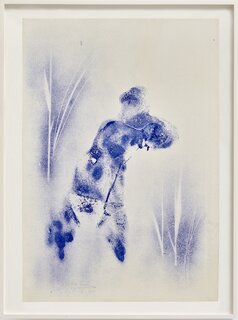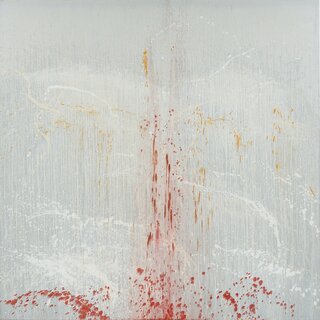
"I make collages. I join the shattered world creating a new harmony.
—Louise Nevelson
Collages, made from fragments of paper, cardboard, newsprint, wood, and other materials found around her studio, form a significant part of Louise Nevelson’s oeuvre. While remaining a relatively unknown aspect of her practice during her lifetime, they parallel the development of her signature wooden assemblages and share their methodology of exploring the aesthetic potential of rejected and discarded materials.
Intimate and personal, the collages demonstrate the continual influence on the artist of Pablo Picasso and Cubism, which she first encountered during the 1920s and 30s. They also set up a close relationship with the main protagonists of the Dada movement, such as Hannah Höch and Kurt Schwitters. Indeed, in a poem written about Nevelson, Jean Arp muses: “Luisa [sic] Nevelson has a grandfather, although she may not know him: Kurt Schwitters.” Yet Nevelson’s work traces its own path, resolutely dismissing the references to quotidian objects and contemporaneity that lingers in the collages of the Cubists. Instead, they join her sculptures in celebrating the abject side of materiality, suggesting a complex symbology of abstract signs and qualitative marks. Writing about such works for Moderna Museet’s (Stockholm) retrospective of the artist in 2017, Frans Josef Petersson notes a “formalized, almost ceremonial aspect to their execution.” The compositions often comprise a tension between two or more surfaces, offering the same undulation of textures as Nevelson’s sculptures. Black, brown, and ochre dominate—Nevelson’s often chosen monochrome and the colors of wood and cardboard—with the occasional flash of a brighter hue.
The present work was made in the period after Nevelson had achieved widespread recognition, a difficult undertaking for a woman of her generation in the midst of the macho milieu of the Abstract Expressionist movement. In 1959, she was included in the Museum of Modern Art’s exhibition Sixteen Americans, alongside Robert Rauschenberg, Jasper Johns, and Frank Stella, and in 1961 in The Art of Assemblage, also at MoMA, which declared collage as one of modernity’s perennial forms of expression. Over the past decade, Nevelson’s collages have undergone a process of rediscovery and been centrally featured in exhibitions at Kunsten Museum of Modern Art, Aalborg, Denmark (2020); Whitney Museum of American Art, New York (2018); Moderna Museet, Stockholm (2017); and Fondazione Marconi, Milan (2016), among other places. Discussing their prescience, writer Mauro Panzera has stated: “This immense body of work now come to light gives further confirmation of the modernity of the artist’s work, which went beyond the classic categories of painting and sculpture to venture with courage and determination into a new world of shapes and generate what today we tend to call the ‘contemporary’.” "




